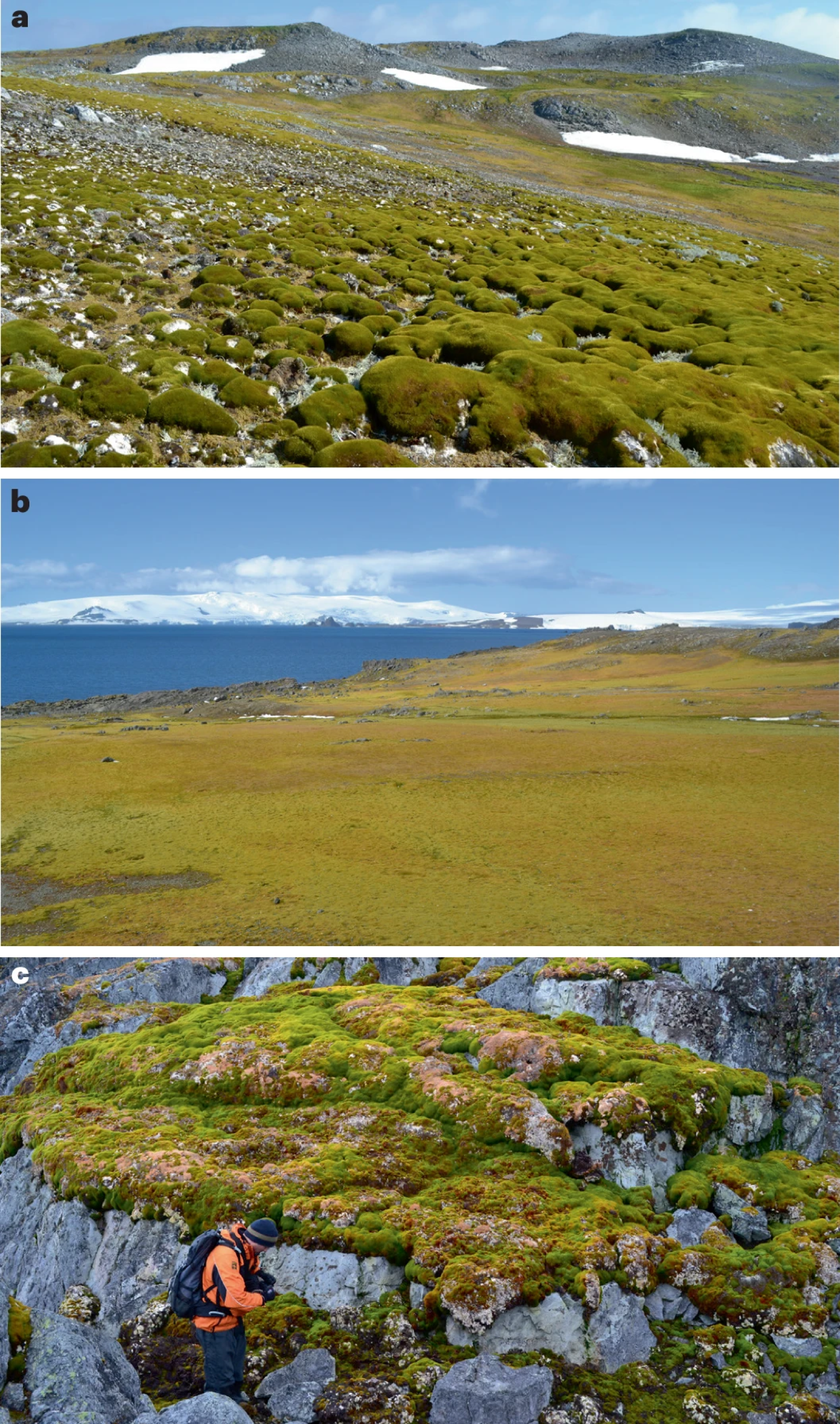The Antarctic paradox: greening and ecological threats
Published by Cédric,
Article author: Cédric DEPOND
Source: Nature Geoscience
Other Languages: FR, DE, ES, PT
Article author: Cédric DEPOND
Source: Nature Geoscience
Other Languages: FR, DE, ES, PT
Follow us on Google News (click on ☆)
This transformation alarms scientists. At the heart of the Antarctic Peninsula, plant coverage has increased dramatically in just four decades.

a - Moss mounds, Ardley Island (62° S).
b - Moss lawn or carpet, Barrientos Island (62° S).
c - Moss bank on bare rock, Norsel Point (64° S).
In 1986, this isolated region hosted less than one square kilometer (0.4 square miles) of plants. By 2021, the area occupied by vegetation had reached almost twelve square kilometers (about 4.6 square miles), representing a fourteen-fold increase.
Researchers note that this growth isn't stopping there. Between 2016 and 2021, vegetation cover grew by more than 30% compared to the previously studied period, expanding on average by 400,000 square meters (about 99 acres) per year. This phenomenon is linked to rising temperatures. The peninsula is warming faster than the global average, creating conditions favorable to plant life.
An expert explains that while snow and ice still dominate, the portion of land colonized by plants has increased significantly. This change signals a direct impact of climate change on fragile ecosystems. However, this growth raises ecological concerns. According to researchers, it could lead to the arrival of non-native species, which might disrupt an already vulnerable ecosystem.
The risk is real because Antarctic soil could become hospitable to invasive plants. These could spread quickly, displacing native species that have adapted to this harsh environment. Scientists emphasize the urgency of conducting thorough research. Understanding the mechanisms at play is essential to anticipate the scale and speed of this transformation.
The study, published in the journal Nature Geoscience, highlights an alarming phenomenon. The peninsula, though still largely frozen, is gradually turning green, marking a turning point in Antarctica's environmental history.
What are the consequences of increased vegetation in Antarctica?
The increase in vegetation in Antarctica has significant ecological implications. One of the most concerning effects is the potential introduction of non-native species. Climate change facilitates the colonization of new plants, creating conditions favorable for the arrival of invasive species. These could disrupt local ecosystems since they lack natural predators to limit their growth.
Moreover, the growing vegetation may lead to changes in interactions among native species. By converting rock into fertile soil, vegetation promotes species diversity. However, this phenomenon could also lead to a homogenization of biodiversity, affecting the distinct biogeographical areas of the Antarctic Peninsula. Ongoing research is essential to understand these complex dynamics and anticipate future impacts.
What is remote sensing and how is it used to study vegetation in Antarctica?
Remote sensing is a method of observing from a distance that uses sensors to collect data on the Earth's surface. In Antarctica, this technique is crucial for measuring vegetation cover, especially in hard-to-reach regions. Researchers use satellite imagery, like those provided by the Landsat program, to analyze changes in vegetation over time.
Satellites capture light reflected by the Earth's surface, allowing vegetated areas to be distinguished by their unique characteristics. Plants absorb red light and reflect near-infrared rays, helping scientists quantify changes in vegetation cover. This approach has revealed significant increases in Antarctic vegetation, providing data to understand the effects of climate change on this ecosystem.